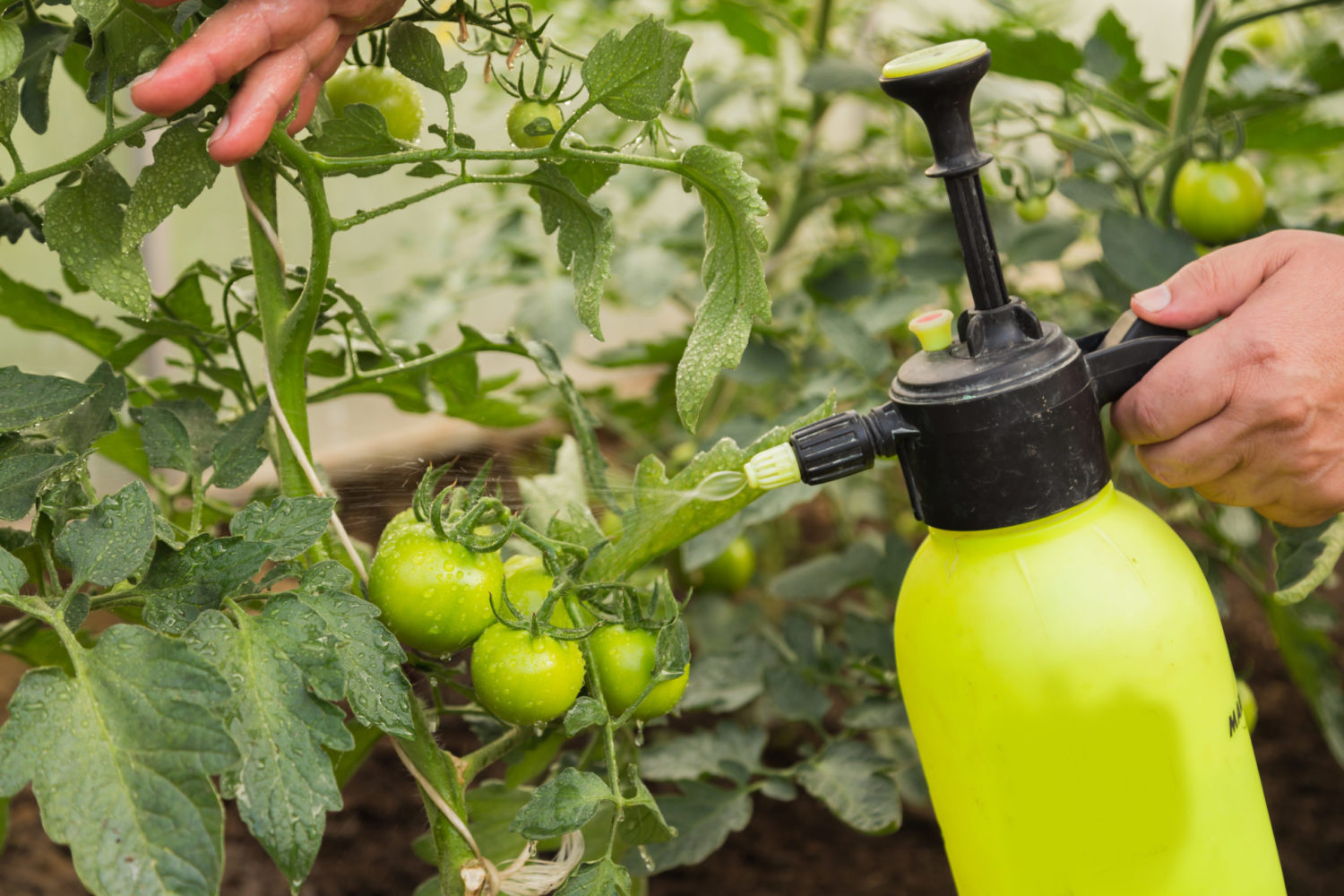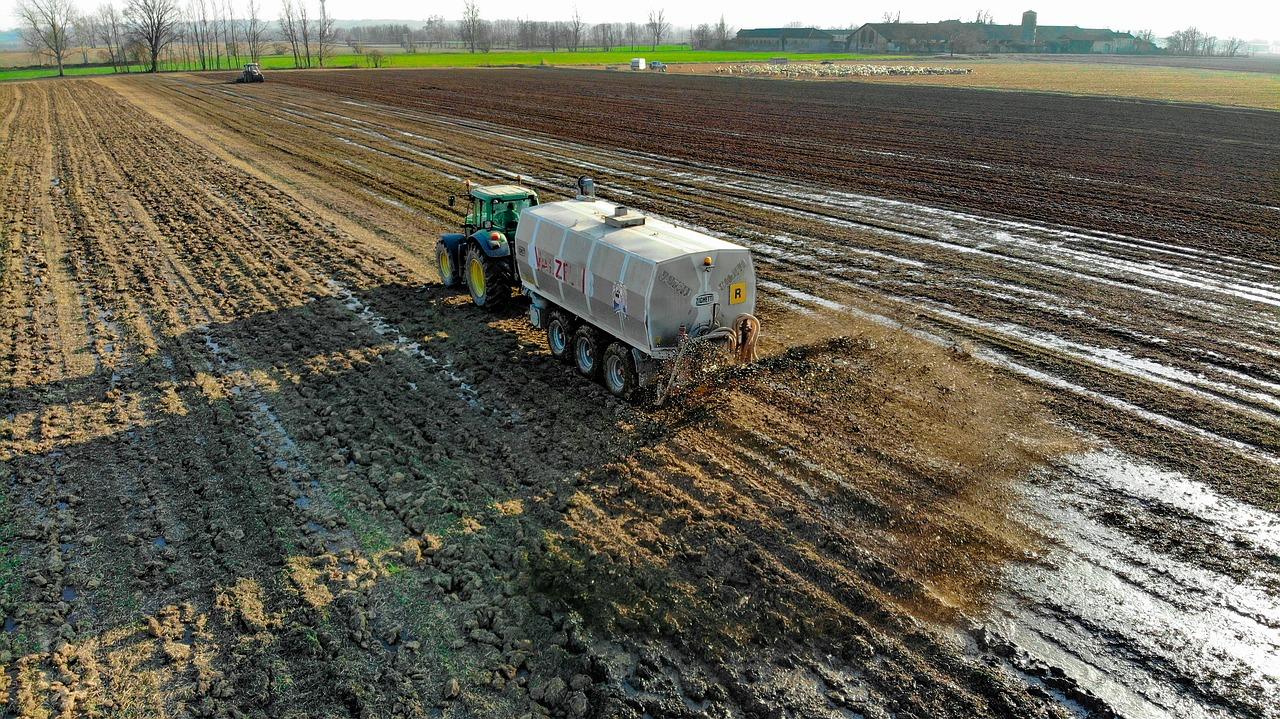Home>Gardening Tips and Tricks>What Is Chemical Fertilizer


Gardening Tips and Tricks
What Is Chemical Fertilizer
Modified: January 22, 2024
"Discover how chemical fertilizers can help you maximize crop yield. Learn the benefits, ingredients, and application methods for achieving optimal results."
(Many of the links in this article redirect to a specific reviewed product. Your purchase of these products through affiliate links helps to generate commission for Chicagolandgardening.com, at no extra cost. Learn more)
Table of Contents
- Introduction
- Definition of Chemical Fertilizer
- Composition of Chemical Fertilizer
- Production and Manufacturing Process
- Types of Chemical Fertilizer
- Advantages of Chemical Fertilizer
- Disadvantages of Chemical Fertilizer
- Environmental Impact of Chemical Fertilizer
- Alternatives to Chemical Fertilizer
- Conclusion
Introduction
Welcome to the world of chemical fertilizer, a vital component of modern agriculture. With the growing global population, the demand for food has reached unprecedented levels. To ensure abundant and healthy crop yields, farmers rely on the use of chemical fertilizers. These concentrated nutrient sources provide essential elements like nitrogen, phosphorus, and potassium to the soil, promoting plant growth and maximizing agricultural productivity.
Chemical fertilizers have revolutionized farming practices by enabling farmers to boost crop yields and meet the increasing food demands of our ever-expanding population. However, their use is not without controversy, as they have both advantages and disadvantages that need to be carefully considered.
In this article, we will explore the definition, composition, production process, types, advantages, and disadvantages of chemical fertilizers. We will also discuss their environmental impact and explore alternative practices that aim to minimize their potential drawbacks.
By the end of this article, you will have a comprehensive understanding of chemical fertilizers and the role they play in modern agriculture, as well as insights into alternative methods that can help strike a balance between maximizing crop yields and minimizing environmental impact.
Definition of Chemical Fertilizer
Chemical fertilizer, also known as synthetic fertilizer or inorganic fertilizer, refers to a type of fertilizer that is manufactured using synthetic or chemically processed materials. Unlike organic fertilizers, which are derived from natural sources such as compost, manure, or plant residues, chemical fertilizers are composed of concentrated nutrients that are formulated to provide specific plant nutrients.
The main purpose of chemical fertilizers is to replenish essential nutrients in the soil that are necessary for plant growth and development. These nutrients, often referred to as macronutrients, include nitrogen (N), phosphorus (P), and potassium (K), as well as secondary nutrients such as calcium, magnesium, and sulfur. In addition to these primary and secondary nutrients, chemical fertilizers may also contain micronutrients like iron, manganese, zinc, copper, and boron, which are required in smaller quantities for optimal plant health.
Chemical fertilizers are typically formulated as granules, powders, or liquids. They can be applied to the soil or directly to the plant foliage. The composition and nutrient content of chemical fertilizers can vary depending on the specific needs of different crops and growing conditions.
It’s important to note that chemical fertilizers are designed to provide a concentrated source of nutrients that can be readily absorbed by plants. This allows for targeted nutrient application to address specific deficiencies in the soil and ensure optimal plant growth and yield. However, it is crucial to apply chemical fertilizers in the right amounts and at the appropriate times to avoid nutrient imbalances, environmental pollution, and negative effects on soil fertility.
In summary, chemical fertilizers are synthetic fertilizers that are formulated to provide specific nutrients essential for plant growth. They play a crucial role in modern agriculture by replenishing soil nutrients and maximizing crop yields. However, careful and responsible use is required to minimize potential drawbacks and environmental impacts.
Composition of Chemical Fertilizer
Chemical fertilizers are composed of a combination of nutrients that are essential for plant growth. The composition of a chemical fertilizer can vary depending on the specific formulation and the needs of different crops. However, the primary nutrients found in most chemical fertilizers are nitrogen (N), phosphorus (P), and potassium (K), commonly referred to as NPK.
Nitrogen (N) is a key nutrient responsible for promoting vegetative growth, leaf development, and overall plant vigor. It plays a vital role in protein synthesis, chlorophyll production, and other metabolic processes within the plant. Nitrogen is typically present in chemical fertilizers in the form of ammonium nitrate, urea, or ammonium sulfate.
Phosphorus (P) is crucial for root development, flowering, and fruiting of plants. It is involved in energy transfer and plays a significant role in promoting early plant growth and overall crop yield. Chemical fertilizers often contain phosphorus in the form of diammonium phosphate (DAP), superphosphate, or triple superphosphate.
Potassium (K) contributes to various physiological and biochemical processes in plants, including water and nutrient uptake, photosynthesis, regulation of enzyme activity, and disease resistance. It helps plants withstand drought, cold, and other environmental stresses. Potassium chloride (muriate of potash) and potassium sulfate are common sources of potassium in chemical fertilizers.
In addition to the primary nutrients, some chemical fertilizers may also contain secondary nutrients such as calcium (Ca), magnesium (Mg), and sulfur (S). These nutrients are required by plants in smaller quantities but are still essential for proper growth and development.
Furthermore, chemical fertilizers can also include trace amounts of micronutrients like iron (Fe), manganese (Mn), zinc (Zn), copper (Cu), boron (B), and molybdenum (Mo). These micronutrients are essential for various enzymatic reactions and plant metabolism.
The concentration of each nutrient within a chemical fertilizer is indicated by the fertilizer grade, typically represented by the NPK ratio. For example, a fertilizer with an NPK ratio of 10-10-10 indicates equal parts of nitrogen, phosphorus, and potassium.
In summary, chemical fertilizers consist of a combination of primary nutrients (nitrogen, phosphorus, and potassium), secondary nutrients (calcium, magnesium, and sulfur), and trace amounts of micronutrients. The specific composition of a chemical fertilizer depends on the targeted nutrient requirements of the crops being grown.
Production and Manufacturing Process
The production and manufacturing process of chemical fertilizers involves several stages, including raw material selection, preparation, blending, granulation, drying, and packaging. While the exact process can vary depending on the specific type of fertilizer being produced, the general steps remain consistent.
The first stage of production is raw material selection. The primary raw materials used in chemical fertilizer production are nitrogen, obtained from ammonia or urea; phosphorus, extracted from phosphate rock; and potassium, derived from potash deposits. These raw materials are carefully sourced and tested to ensure their quality and nutrient content.
Once the raw materials are obtained, they undergo preparation to convert them into a form suitable for manufacturing. This can involve crushing, grinding, or pulverizing the materials to achieve uniform particle size and improve their solubility.
In the next stage, the prepared raw materials are blended in precise proportions to achieve the desired nutrient composition. This blending process ensures a consistent and homogeneous mixture of nutrients, which is essential for uniform nutrient distribution when the fertilizer is applied to the soil.
After blending, the mixture is passed through a granulation process. Granulation involves combining the blended materials with water or a binding agent to form granules of a specific size and shape. This process improves the handling and application characteristics of the fertilizer, making it easier to spread evenly across the field.
The granulated fertilizer is then dried to remove excess moisture. This is typically done using hot air or a rotary drum dryer, which evaporates the water and reduces the moisture content of the granules. Proper drying is crucial to prevent caking or clumping of the fertilizer and ensure its long shelf life.
Finally, the dried granules are packaged into bags or bulk containers for distribution and sale. The packaging ensures the fertilizer remains protected from moisture and maintains its quality until it reaches the end-user.
It is worth noting that the production of chemical fertilizers is carefully regulated to ensure adherence to safety and environmental standards. Efforts are made to minimize waste generation, optimize resource utilization, and reduce energy consumption during the manufacturing process.
In summary, the production and manufacturing process of chemical fertilizers involves raw material selection, preparation, blending, granulation, drying, and packaging. This ensures the production of consistent, high-quality fertilizers that can effectively deliver essential nutrients to the soil for optimal plant growth and yield.
Types of Chemical Fertilizer
Chemical fertilizers come in various types, each designed to address specific nutrient deficiencies and meet the unique needs of different crops and soil conditions. Here are some common types of chemical fertilizers:
- Nitrogenous Fertilizers: These fertilizers primarily provide nitrogen, which is crucial for plant growth. Examples include urea, ammonium nitrate, and ammonium sulfate.
- Phosphatic Fertilizers: These fertilizers are a rich source of phosphorus, important for root development and flower formation. Common examples include triple superphosphate, single superphosphate, and diammonium phosphate (DAP).
- Potassic Fertilizers: Potassic fertilizers supply potassium, which aids in plant vitality and resilience to stress. Examples include potassium chloride (muriate of potash) and potassium sulfate.
- Compound Fertilizers: Compound fertilizers are a blend of two or more primary nutrients in varying proportions. They provide a balanced nutrient supply to meet the needs of specific crops. Examples include NPK blends such as 10-10-10 or 20-20-20.
- Micronutrient Fertilizers: These fertilizers contain trace amounts of essential micronutrients like iron, manganese, zinc, copper, and boron. They help address specific nutrient deficiencies and improve plant health.
- Foliar Fertilizers: These fertilizers are applied directly to the plant leaves, allowing for faster nutrient absorption. They are often used to correct nutrient deficiencies or provide nutrients during critical growth stages.
- Slow-Release Fertilizers: Slow-release fertilizers are designed to release nutrients gradually over an extended period. They provide a steady supply of nutrients to plants, reducing the risk of nutrient leaching and optimizing nutrient uptake.
Each type of chemical fertilizer has its specific characteristics and benefits. Farmers and growers need to consider factors such as crop requirements, soil conditions, and environmental impact when selecting the appropriate fertilizer for their needs.
It’s important to note that using a combination of different fertilizers and applying them in the right amounts and at appropriate times can help maintain a balanced nutrient profile for the soil and promote sustainable agriculture practices.
In summary, there are various types of chemical fertilizers available, including nitrogenous, phosphatic, potassic, compound, micronutrient, foliar, and slow-release fertilizers. Selecting the right type depends on the specific nutrient requirements of the crop and the condition of the soil.
Advantages of Chemical Fertilizer
Chemical fertilizers offer several advantages that contribute to their widespread use in modern agriculture. These advantages include:
- Precision and Control: Chemical fertilizers allow farmers to provide precise and targeted nutrient supplementation to crops. They can be formulated to address specific nutrient deficiencies in the soil, ensuring plants receive the necessary nutrients for optimal growth and yield.
- Increase in Crop Yields: By replenishing essential nutrients, chemical fertilizers significantly boost crop yields. They provide a concentrated source of nutrients, promoting vigorous plant growth, increased biomass production, and improved harvest quality. This is especially crucial in meeting the demands of a growing global population.
- Efficiency: Chemical fertilizers are highly efficient in delivering nutrients to plants. The concentrated form and water-soluble nature of these fertilizers ensure that plants can readily absorb the nutrients. This efficient nutrient uptake reduces wastage and allows for maximum utilization of resources.
- Convenience and Availability: Chemical fertilizers are readily available and easy to use. They can be purchased in various forms and quantities, making them accessible to farmers of all scales. Additionally, chemical fertilizers have a longer shelf life compared to organic alternatives, ensuring their availability throughout the growing season.
- Cost-Effectiveness: Chemical fertilizers are often more affordable compared to organic fertilizers. They offer a cost-effective solution for farmers who need to supply large quantities of nutrients to their crops without breaking the bank.
- Improved Predictability: Chemical fertilizers provide consistent nutrient content, allowing farmers to have better control over the nutrient supply to their crops. This enhances predictability in terms of plant growth, development, and overall crop performance.
It’s important to note that the advantages of chemical fertilizers can vary depending on factors such as the crop being grown, soil conditions, and management practices. However, when used judiciously and in conjunction with good agricultural practices, chemical fertilizers can play a vital role in maximizing crop production and ensuring food security.
In summary, the advantages of chemical fertilizers include precision and control in nutrient supplementation, increased crop yields, efficiency in nutrient uptake, convenience and availability, cost-effectiveness, and improved predictability in crop performance.
Disadvantages of Chemical Fertilizer
While chemical fertilizers offer several benefits in enhancing agricultural productivity, they also come with a set of disadvantages that need to be carefully considered. These disadvantages include:
- Environmental Impact: One of the biggest concerns associated with chemical fertilizers is their potential negative impact on the environment. Excessive or improper application of fertilizers can lead to nutrient runoff into water bodies, causing pollution and eutrophication. This nutrient runoff can contribute to harmful algal blooms and oxygen depletion in aquatic ecosystems.
- Soil Degradation: Continuous and excessive use of chemical fertilizers without appropriate soil management practices can lead to soil degradation. The reliance on chemical fertilizers alone can lead to nutrient imbalances and depletion of soil organic matter. Over time, this can result in reduced soil fertility, decreased microbial activity, and degradation of soil structure.
- Cost of Inputs: Chemical fertilizers can be costly, especially for small-scale farmers. The need to purchase and apply large quantities of fertilizers can put financial strain on farmers, particularly in regions with limited resources.
- Dependency: Relying solely on chemical fertilizers can create a dependency on external inputs. This dependency can make farmers vulnerable to fluctuating prices and availability of fertilizers, potentially impacting their livelihoods.
- Potential Health Risks: The mishandling or improper application of chemical fertilizers can pose health risks. Direct exposure to concentrated fertilizers without proper safety measures can lead to skin irritation, respiratory issues, and other health concerns for farmers and workers.
- Impact on Beneficial Organisms: Chemical fertilizers can have unintended consequences on beneficial soil organisms such as earthworms, beneficial bacteria, and fungi. These organisms play essential roles in nutrient cycling, soil structure formation, and overall soil health. Excessive use of chemical fertilizers can disrupt the delicate balance of soil ecosystems and harm these beneficial organisms.
It is important to note that many of these disadvantages can be mitigated through proper fertilizer management practices. Implementing measures such as precision agriculture, nutrient management plans, soil testing, and using organic amendments alongside chemical fertilizers can help minimize the negative impacts associated with their use.
In summary, the disadvantages of chemical fertilizers include their potential environmental impact, soil degradation, cost of inputs, dependency on external sources, potential health risks, and impact on beneficial soil organisms. It is crucial to address these concerns through responsible and sustainable use of chemical fertilizers.
Environmental Impact of Chemical Fertilizer
While chemical fertilizers have significantly contributed to increased crop yields and improved food production, they also have a notable environmental impact. The key environmental concerns associated with the use of chemical fertilizers include:
- Water Pollution: Excessive or improper application of chemical fertilizers can result in nutrient runoff into rivers, lakes, and other water bodies. This runoff carries nitrogen and phosphorus from the fertilizers, which can lead to water pollution. The excessive nutrients cause eutrophication, a process that promotes the growth of harmful algal blooms, degrades water quality, and disrupts aquatic ecosystems.
- Air Pollution: Volatilization of nitrogen-based fertilizers, such as ammonia, can lead to ammonia gas emissions. These emissions contribute to air pollution and can have adverse effects on human health and ecosystems. Additionally, the production and transportation of chemical fertilizers contribute to greenhouse gas emissions, contributing to climate change.
- Soil Degradation: Excessive and improper use of chemical fertilizers can negatively impact soil health. Over time, the overapplication of fertilizers can lead to nutrient imbalances, soil acidification, and depletion of organic matter. These factors can impair soil fertility, decrease beneficial soil organisms, and degrade overall soil structure and nutrient-holding capacity.
- Biodiversity Loss: The excessive use of chemical fertilizers, especially in monoculture agriculture, can contribute to habitat destruction and biodiversity loss. The intensive use of fertilizers often leads to the conversion of natural habitats into agricultural land, which can result in the loss of diverse plant and animal species.
- Groundwater Contamination: Improper application and overuse of chemical fertilizers can lead to the leaching of nitrates into groundwater. Nitrate contamination poses a significant risk to human health, as high levels of nitrates in drinking water can cause serious health issues, particularly in infants and pregnant women.
- Soil Erosion: High nutrient concentrations from chemical fertilizers can stimulate rapid vegetative growth, leading to increased vulnerability to soil erosion. Excessive plant growth and a weakened root system contribute to reduced soil stability, making it more susceptible to erosion by wind and water.
Addressing these environmental impacts requires adopting sustainable practices in fertilizer use. Implementing precision agriculture techniques, optimizing fertilizer application rates, practicing crop rotation, and incorporating organic amendments can help reduce the negative impacts of chemical fertilizers on the environment.
In summary, the use of chemical fertilizers can have significant environmental implications, including water pollution, air pollution, soil degradation, biodiversity loss, groundwater contamination, and soil erosion. It is crucial to adopt responsible fertilizer management practices to mitigate these environmental risks and promote sustainable agriculture.
Alternatives to Chemical Fertilizer
Recognizing the potential drawbacks of chemical fertilizers, many farmers and researchers have been exploring alternative approaches to nutrient management in agriculture. These alternatives aim to reduce dependency on chemical fertilizers and minimize their environmental impact. Some of the notable alternatives to chemical fertilizers include:
- Organic Fertilizers: Organic fertilizers, such as compost, manure, and plant-based materials, offer a natural and sustainable alternative to chemical fertilizers. These organic amendments provide a slow-release source of nutrients and also improve soil structure, water-holding capacity, and microbial activity.
- Cover Crops: Planting cover crops such as legumes and grasses can help restore soil fertility naturally. They fix atmospheric nitrogen, reduce nutrient leaching, suppress weeds, and improve soil health by enhancing organic matter content.
- Crop Rotation: Implementing crop rotation practices helps break disease cycles, prevent nutrient depletion, and improve soil fertility. By alternating different crop species in sequence, nutrient demands can be better managed, reducing the need for excessive fertilizer application.
- Integrated Nutrient Management: Integrated Nutrient Management (INM) involves combining different nutrient sources to meet crop requirements sustainably. This approach includes the use of organic fertilizers, biofertilizers, and mineral fertilizers in a synchronized manner to optimize nutrient availability and minimize environmental impacts.
- Green Manure: Green manure involves growing specific plants (often legumes) that are later incorporated into the soil as green manure. This practice enhances soil fertility, improves soil structure, and increases nutrient availability for subsequent crops.
- Biological Nutrient Fixation: Utilizing biological processes for nutrient fixation can reduce reliance on chemical fertilizers. For example, employing nitrogen-fixing bacteria (e.g., rhizobia) to establish symbiotic relationships with leguminous crops provides a natural source of nitrogen to the soil.
- Precision Agriculture Techniques: Using advanced technologies like remote sensing, GPS, and soil sensors can help optimize fertilizer application by providing real-time information on nutrient requirements and spatial variability within fields. This precise approach minimizes overfertilization and reduces nutrient loss.
By adopting these alternative practices and incorporating them into sustainable agricultural systems, farmers can reduce their reliance on chemical fertilizers while maintaining or improving crop yields and soil health. It is essential to integrate these approaches into site-specific management practices, considering factors such as crop type, soil type, climate conditions, and local farming practices.
In summary, alternatives to chemical fertilizers include organic fertilizers, cover crops, crop rotation, integrated nutrient management, green manure, biological nutrient fixation, and precision agriculture techniques. These alternatives offer more sustainable approaches to nutrient management, helping to minimize environmental impacts and promote long-term soil health and productivity.
Conclusion
Chemical fertilizers have played a significant role in modern agriculture, contributing to increased crop yields and ensuring food security for a growing global population. They offer precision and control in nutrient supplementation, convenience, and cost-effectiveness. However, it is crucial to acknowledge and address the potential disadvantages and environmental impacts associated with their use.
The environmental impact of chemical fertilizers, such as water and air pollution, soil degradation, and biodiversity loss, calls for responsible and sustainable nutrient management practices. Farmers and researchers have been exploring alternatives to chemical fertilizers, such as organic fertilizers, crop rotation, cover crops, and precision agriculture techniques. These alternatives aim to reduce dependency on chemical inputs, minimize environmental damage, and promote long-term soil health and productivity.
The key lies in adopting integrated approaches to nutrient management that combine the strengths of different fertilizer sources, utilize biological processes, and leverage advanced technologies. By implementing sustainable practices, farmers can strike a balance between maximizing crop yields and minimizing environmental impact.
It is important for farmers, policymakers, and consumers to recognize the importance of responsible fertilizer use and support initiatives that promote sustainable agriculture. By embracing alternative practices and promoting sustainable farming systems, we can ensure the long-term viability of agriculture, protect our natural resources, and preserve the health of our planet.










